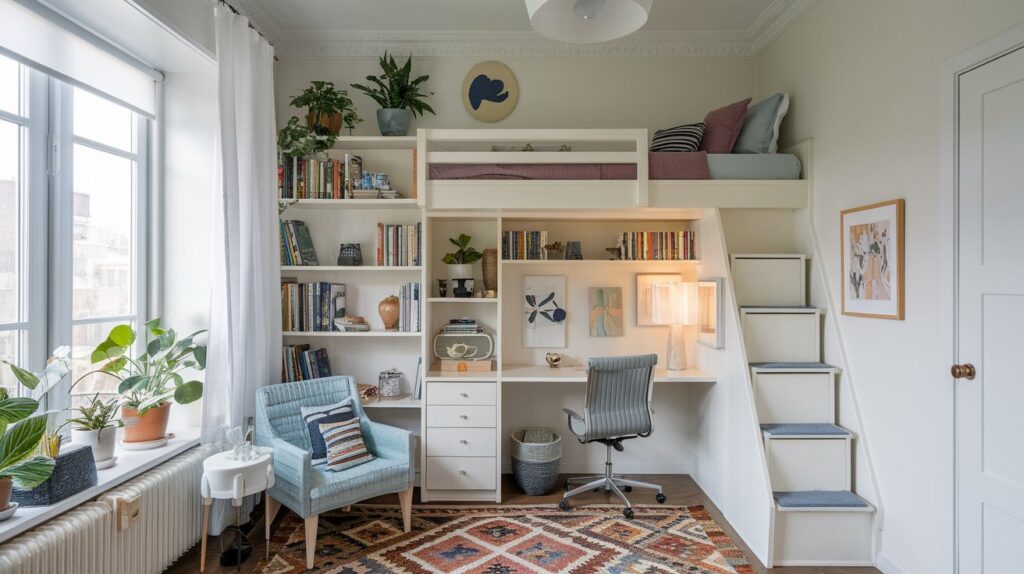Not long ago, the idea of a dream home usually meant square footage, extra rooms, and a mortgage big enough to make your stomach flip. But something changed. Maybe it was the collective exhaustion from upkeep, or the realization that comfort doesn’t have to mean excess. Either way, people have started redefining what home actually means-and small spaces are leading the way.
Smaller homes force intention. You can’t hide behind square footage or stash unused stuff in a forgotten closet. What stays has purpose. That shift naturally changes how people live and even how they spend. They focus on quality, not quantity. A linen sofa instead of two cheap ones. Real art instead of mass prints. A single candle that fills the room instead of a dozen that barely flicker. It’s not about deprivation. It’s about precision-living with what you actually love, and nothing that drags your energy down.
Designing For Function And Flow
Small-space design has matured past the Pinterest fantasy of “tiny living.” Designers are creating spaces that feel expansive, layered, and lived-in, all while fitting into under a thousand square feet. Light plays a big role-skylights, soft whites, pale woods. Mirrors and glass partitions keep the eye moving so rooms feel connected instead of boxed in. And furniture placement has become a kind of quiet science.
Multifunctional pieces are key: ottomans with storage, wall beds that turn into desks, and kitchen islands that double as dinner tables. These homes function like a well-written paragraph, no wasted words, just clarity and flow. Even the tech gets smarter. A single outdoor security camera now covers what used to require an entire system, integrating seamlessly with compact layouts and minimalist exteriors. The setup is discreet, efficient, and exactly the kind of solution modern homeowners expect.
The New Appeal Of Mobility
As the idea of permanence loses its grip, more people are embracing freedom over foundation. Enter mobile homes, which are no longer the humble cousins of traditional builds. Modern models are architectural statements, often with energy-efficient materials, chic finishes, and layouts designed by real designers instead of factory blueprints. Some feature solar panels and reclaimed wood, others look like boutique hotels on wheels.
What draws people in isn’t just price or novelty-it’s flexibility. Being able to relocate without losing the sense of “home” is liberating. Whether parked near the mountains or overlooking a quiet lake, these homes give people control over their environment in a way that fixed locations can’t. That’s become a kind of luxury in itself. The American dream is changing shape, and it fits neatly on a flatbed.
Style Meets Scale
There’s a myth that smaller homes limit style. In reality, the opposite tends to happen. When space is scarce, each choice carries more weight. A deep indigo tile backsplash can define an entire kitchen. A velvet loveseat becomes an anchor point instead of filler. Lighting becomes an art.
People are realizing that decorating a small space isn’t about compromise, it’s about clarity. Instead of matching sets, they mix eras and textures-a rustic stool under a marble countertop, a sculptural lamp beside a thrifted chair. The mix creates dimension and charm. Designers have taken notice, too, often showcasing these spaces in high-profile projects. A well-curated small home now tells a story about personality, restraint, and care, traits far more compelling than sheer square footage.
Community Over Isolation
Another reason small homes are thriving has less to do with interiors and more with what happens outside their walls. As people downsize, they tend to connect more. Less house to manage means more time to spend being human-talking to neighbors, sharing meals, joining local groups, actually living. Many developments for compact homes now include shared gardens, walking paths, and community gathering spaces. The shift isn’t just aesthetic, it’s social.
This emphasis on connection reflects a cultural correction. After decades of isolation behind fences and garages, there’s a renewed appetite for togetherness. The new dream home isn’t a castle that shuts the world out. It’s a nest that invites it in.
Where It All Leads
Smaller homes have become a quiet rebellion against excess. They prove that good design isn’t about showing off but about living well. The beauty is in how intentional every inch feels. The furniture fits because it’s meant to. The walls breathe because they’re not overloaded. The space works because someone cared enough to make it honest.
What’s unfolding across neighborhoods, cities, and countryside is a redefinition of luxury. It’s not about bigger closets or extra wings. It’s about waking up in a home that feels right for your life now, not someday. Small spaces have stepped up, not as compromises, but as reflections of a mindset shift that’s long overdue. The dream didn’t disappear. It just got smarter, lighter, and a whole lot more livable.

